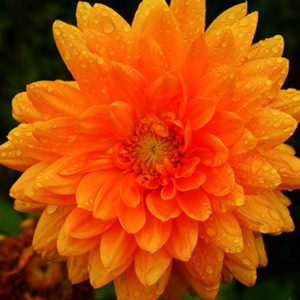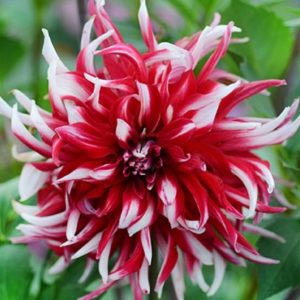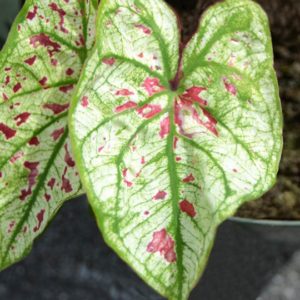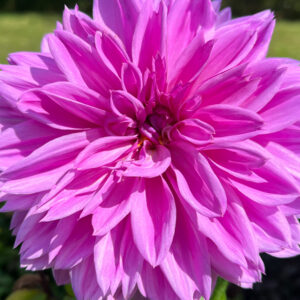Description
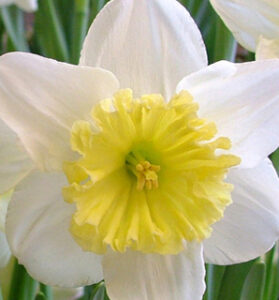 Large Cupped Narcissus,
Large Cupped Narcissus,
Ice Follies
All you have to do is whisper the word, narcissus, and visions of meadows of sunshine yellow flowers come to mind. In today’s world, with critters like deer, chipmunks, rabbits, squirrels, moles and voles feasting on many of our spring blooming bulbs, the narcissus has become the most popular spring garden flower.
Narcissus is the name given to a vast family of plants. Jonquils are included in that family, and daffodils are a common name for narcissus. Narcissus are part of the Amaryllis family and are native to many parts of our planet, but not North and South America. All of the narcissus grown in the United States were brought here from Europe, the British Isles and the Middle East.
The Latin name, narcissus, was believed to have been derived from the Greek myth about Narcissus. However, Pliny, the Roman naturalist, argued that the name, Narcissus, derives from the term, narkao, meaning to benumb and that it is a reference to the bulbs’ medicinal abilities to cause instant numbness.
It was the Romans who brought winter hardy narcissus varieties to Britain in the early centuries AD. By the 17th century, Europeans had been cultivating daffodils for at least 1000 years, and the first doubles were being developed. The earliest European settlers to the New World brought daffodils with them. As early as 1651, a mere 44 years after the first colonists arrived in Jamestown, large, naturalized meadows of daffodils were described in writing near the town of Gloucester, VA.
Ice Follies is a Large-cupped Narcissus. Large Cupped Narcissus are very showy varieties that have huge, ruffled, colorfully edged trumpets.
Ice Follies was introduced in 1953 by the venerable Dutch bulb company, Konynenburg & Mark, Ltd. K. & N. was founded in 1919 and began raising daffodils in 1938. For decades, the industry had been working to develop a pure white daffodil. Ice Follies represented the best the industry had accomplished.
This daffodil begins its bloom life as a large 4-inch diameter blossom with pure white petals and a pale chartreuse-yellow trumpet. Because of the size of its trumpet it is included in Division II of the International Classification of Daffodils. What is distinctive about this daffodil and the reason why it is referred to as one of the earliest “White Daffodils” is the fact that its trumpet color changes dramatically as the blossom ages. The yellow color fades until the trumpet becomes pure white. Only at the very end of its bloom life is Ice Follies a truly white daffodil.
Ice Follies reaches a height of 18-20 inches and blooms mid-season. It is hardy from Hardiness Zones 3-7. It is an outstanding naturalizer, spreading rapidly, and a good forcer. It can be planted in drifts with as few as 5 bulbs.
The much adored Narcissus has been a part of this country’s horticultural heritage since before the US was founded.
Planting Bulbs in the Fall for Glorious Spring Color
Bulbs are some of the easiest plants to grow. Fundamentally the process requires four steps.
1. Dig a hole.
2. Dust the hole with bone meal.
3. Place the bulb in the hole.
4. Fill the hole with soil.
There are, however, some additional refinements which help produce even more lavish results and enhance protection from critters.
First, bulbs can and should be planted deeper than the instructions you receive on the package labels. An easy way to remember how deep to plant the bulb is to think of a quarter. If the bulb you are planting has the same diameter as a quarter or less, plant the bulb 4 inches deep. If the bulb is broader than a quarter, plant it 6-10 inches deep. Large bulbs like some alliums, camassias, standard tulips and fritillaries can easily be planted 10 inches deep. As the soil compacts days, weeks and months after planting, it produces a thinner layer of soil on top of the bulb. Planting bulbs deep helps with critter control. Moles, voles, chipmunks and squirrels are lazy little creatures, and they don’t like doing a lot of digging to reach their food.
Second, bone meal is a must. It is an excellent source of calcium and phosphorus which help the bulbs to form a strong root system and healthy stems. For large bulbs (those bigger than a quarter), use ¼ cup per bulb. For small bulbs, dust the entire surface or hole where the bulbs will reside.
Third, small bulbs should be planted in clusters of 10 or more – 1 inch apart. Large bulbs, like allium, can stand along, but create a much more pleasing presence in the garden when planted is clusters of 3-5. They should be separated by no more than 4-6 inches.
Fourth, bulbs usually multiply fairly quickly and once crowded will not produce blossoms. Plan to divide your bulbs in mid-summer to fall when the top growth has dried out.
These simple, easy, quick tasks are all that is required to produce a lovely bulb display year after year.
Planting Bulbs in Containers
If you live in Hardiness Zones 5 and higher all you need to do is mix some soil. Check out the soil mix described in detail in our Harvesting History YouTube video. Do not use prepared soil mixes.
The Best Soil Mix for Containers
Always plant bulbs more densely in containers than in the ground. Pots as small as 6-inches in diameter can have a showy presence on a deck, porch or patio. You can use much larger pots and plant several kinds of bulbs.
Fill the pot half full, dust the soil surface with bone meal, arrange the bulbs on top of the bone meal and fill the pot with the rest of the soil. Dust the surface of the soil with more bone meal. Water thoroughly, but do not let the pot stand in a saucer of water.
If you live in Hardiness Zones 1-4, you must protect the pots by bringing them into an unheated garage or surrounding them with bales of straw. If you do not do this, the bulbs usually freeze and turn to mush.


